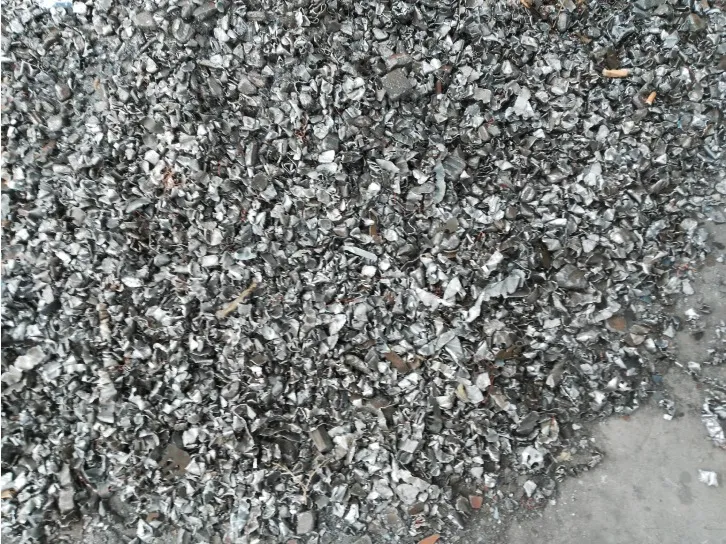

Νοέ . 26, 2024 15:35 Back to list
Eddy Current Magnetic Separator Revolutionizing Recycling and Material Recovery
In today's rapidly evolving industrial landscape, waste management and material recovery have become pivotal to sustainability and environmental conservation. Among the innovative technologies at the forefront of recycling processes is the Eddy Current Magnetic Separator. This device has been instrumental in enhancing the efficiency of separating non-ferrous metals from other materials, thus playing a crucial role in recycling operations.
Understanding Eddy Currents
The principle of eddy currents was first introduced over a century ago and is rooted in electromagnetic induction. When a conductor, such as aluminum or copper, passes through a magnetic field, it generates swirling currents known as eddy currents. These currents create their own magnetic field, which interacts with the original magnetic field, ultimately resulting in a repulsive force that can effectively separate non-ferrous metals from waste streams.
Design and Components
An Eddy Current Magnetic Separator typically consists of a vibratory feeder, a conveyor belt, and a rotating magnetic drum. The waste material is fed onto the conveyor belt, where it is evenly distributed and passed in front of the eddy current separator. As the belt moves, the non-ferrous metals enter the rotating magnetic field generated by the magnetic drum.
The design of the separator ensures that while ferrous materials are attracted towards the drum, non-ferrous metals experience a different reaction due to the eddy currents. The separator effectively propels non-ferrous metals away from other materials, allowing for cleaner, more precise extraction in the recycling process.
Applications
Eddy Current Magnetic Separators are widely used in various industries, including
1. Recycling Facilities They play a crucial role in sorting aluminum cans, copper wiring, and other non-ferrous metals from mixed waste streams. This not only enhances the purity of recycled materials but also increases their value in the market.
2. Mining Operations In mining, eddy current separators help recover valuable metals from tailings and ore processing. This contributes to resource conservation and reduces the environmental impact associated with traditional mining practices.
3. Plastic Recycling The technology also aids in separating non-ferrous metals embedded in plastic materials, which can significantly improve the quality of recycled plastic.

Advantages of Eddy Current Magnetic Separators
The advantages of using Eddy Current Magnetic Separators in various applications are manifold
- High Efficiency Eddy current separators can achieve high levels of metal recovery, often exceeding 90%, thereby optimizing the recycling process and maximizing material value.
- Low Operating Costs The automated nature of these separators reduces the need for manual labor in sorting, leading to lower operational costs over time.
- Eco-Friendly By facilitating the recycling of non-ferrous metals, these devices contribute significantly to reducing landfill waste and promoting sustainable practices.
- Versatility Eddy Current Magnetic Separators can be adjusted to suit different applications and materials, making them versatile tools in the recycling industry.
Challenges and Considerations
Despite their advantages, there are challenges associated with Eddy Current Magnetic Separators. As the technology relies heavily on the physical properties of materials, careful calibration and maintenance are necessary to ensure optimal performance. Additionally, the initial investment can be significant, which may deter some smaller facilities from adopting this technology.
Conclusion
Eddy Current Magnetic Separators represent a significant advancement in the field of recycling and material recovery. By leveraging the principles of electromagnetic induction, they offer an effective solution for separating non-ferrous metals from various waste streams. As industries and societies continue to prioritize sustainability, the importance of technologies like the Eddy Current Magnetic Separator will only grow, helping to create a more circular economy and reduce environmental impact. Embracing this technology will not only lead to efficient recycling but will also pave the way for a greener and more sustainable future.
Latest news
Troubleshooting Common Eddy Separator Problems
NewsJul.04,2025
The Role of Metal Recycling Plants in Circular Economy
NewsJul.04,2025
The Impact of Recycling Line Pickers on Waste Management Costs
NewsJul.04,2025
Safety Features Every Metal Shredder Should Have
NewsJul.04,2025
How Industrial Shredders Improve Waste Management Systems
NewsJul.04,2025
How Cable Granulators Contribute to Sustainable Recycling
NewsJul.04,2025